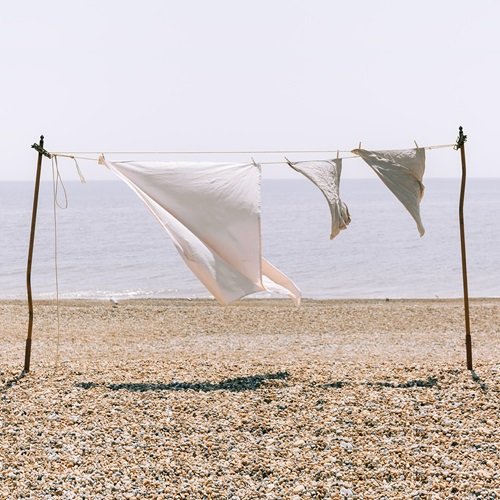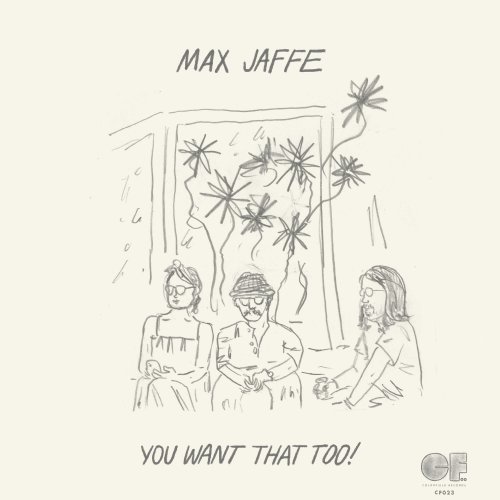Emma Kirkby, The Brandenburg Consort, Roy Goodman - Vivaldi: Opera Arias and Sinfonias (1994)
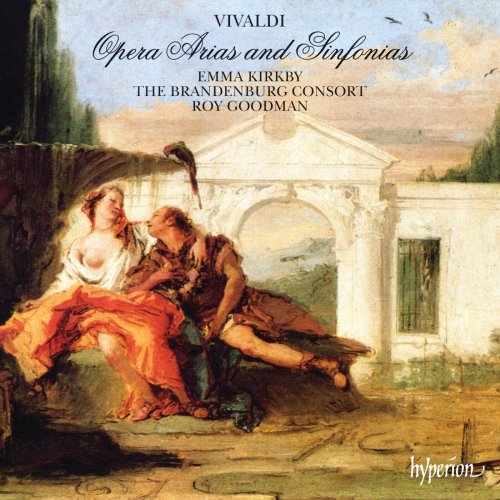
Artist: Emma Kirkby, The Brandenburg Consort, Roy Goodman
Title: Vivaldi: Opera Arias and Sinfonias
Year Of Release: 1994
Label: Hyperion
Genre: Classical
Quality: flac lossless (image +.cue, log, artwork, booklet)
Total Time: 01:14:53
Total Size: 314 mb
WebSite: Album Preview
TracklistTitle: Vivaldi: Opera Arias and Sinfonias
Year Of Release: 1994
Label: Hyperion
Genre: Classical
Quality: flac lossless (image +.cue, log, artwork, booklet)
Total Time: 01:14:53
Total Size: 314 mb
WebSite: Album Preview
01. Griselda, RV 718: Sinfonia Pt. 1. Allegro
02. Griselda, RV 718: Sinfonia Pt. 2. Andante
03. Griselda, RV 718: Sinfonia Pt. 3. Minuetto. Allegretto
04. Griselda, RV 718, Act III: Ombre vane, ingiusti orrori (Costanza)
05. Griselda, RV 718, Act II: Agitata da due venti (Costanza)
06. Tito Manlio, RV 738, Act II: Scene 1. Non ti lusinghi la crudeltade (Lucio)
07. Ottone in villa, RV 729: Sinfonia: a. Allegro
08. Ottone in villa, RV 729: Sinfonia: b. Larghetto
09. Ottone in villa, RV 729: Sinfonia: c. Allegro
10. Ottone in villa, RV 729, Act I: Scene 11. Gelosia, tu già rendi l'alma mia (Caio)
11. Ottone in villa, RV 729, Act II: Scene 3. L'ombre, L'aure, e ancora il rio (Caio)
12. L'Atenaide, RV 702, Act III: Scene 7. Ferma, Teodosio (Atenaide)
13. Il Bajazet (Il Tamerlano), RV 703: Sinfonia: a. [Allegro]
14. Il Bajazet (Il Tamerlano), RV 703: Sinfonia: b. Andante molto
15. Il Bajazet (Il Tamerlano), RV 703: Sinfonia: c. Allegro
16. L'incoronazione di Dario, RV 719, Act II: Non mi lusinga vana speranza (Oronte)
17. Catone in Utica, RV 705, Act II: Scene 5. Se mai senti spirarti sul volto (Cesare)
18. Catone in Utica, RV 705, Act II: Scene 9. Se in campo armato (Cesare)
Although Vivaldi is now best known for his many instrumental works, he was also a prolific composer of operas. By the time of his operatic debut in 1713, at the age of thirty-five, he had already achieved an international reputation as a concerto composer; from then on both activities continued in parallel for the rest of his career. We do not know exactly how many operas Vivaldi wrote: a letter of 1739 claims ninety-four, but this figure, reflecting Vivaldi’s penchant for exaggeration, doubtless included revivals and rearrangements of his own and other composers’ works. Nevertheless, we have over fifty surviving printed librettos and around twenty scores, most of which are largely complete. Vivaldi’s involvement with the operatic scene was not only as a composer: he was active throughout his career as impresario, running theatres, booking singers (often knocking down their fees in the process!), and putting on works by other composers as well as his own. In fact it was his operatic engagements that led to many of his travels outside Venice, to centres as far afield as Rome, Florence, Vienna and probably Prague.
All Vivaldi’s surviving operatic overtures, which the composer entitles ‘Sinfonia’, fall into the three-movement pattern found in the vast majority of his concertos. With the exception of Dorilla in Tempe, where the sinfonia’s final movement and the opera’s introductory chorus share material taken from the opening of Vivaldi’s famous concerto La primavera, RV269, from The Four Seasons, there is normally no thematic connection between overture and opera. Indeed, their independence is underlined by the nature of the manuscripts, in which the sinfonia normally appears before the work’s title page, and in fact several of Vivaldi’s operas reuse sinfonias from earlier works.
The opening movement in the major key is normally brilliant in character, the initial idea frequently exploiting the more showy aspects of violin technique such as the multiple-stopped ‘three hammer-strokes’ (familiar from many of Vivaldi’s concertos) which open the overtures to two operas from 1735, Griselda and Tamerlano (the latter is entitled Il Bajazet in the composer’s autograph score). Once the audience’s attention has thus been gained, Vivaldi presents a series of contrasting ideas, some of which return, frequently in a slightly curtailed form, giving a structure similar to that of the ripieno concerto. One prominent section is often soft and in the minor key: in Griselda this involves chromatic inflections and appoggiaturas, while in Tamerlano it strikingly presents a melodic bass line under sustained chords in the upper strings. The middle movements of these two overtures are typical of Vivaldi: they are gentle minor-key andantes, a lyrical line for unison violins being accompanied by throbbing repeated notes in the lower strings without harpsichords. The finales are lively triple-time dance movements providing a brief return of the major key. Here again the violins are in unison, although in Tamerlano the horns, silent in the central andante because of its minor tonality, are added to the texture.
The sinfonia to the early opera Ottone in villa is the only such work, other than the Tamerlano overture, to include wind instruments; here, however, Vivaldi calls on a pair of oboes, whose prominent solo passages in thirds alternate in the first movement with more virtuoso writing for two solo violins. The second movement departs from the normal style of the later sinfonias: it is in binary form, each half being played first by the oboes accompanied by violins and then by the full strings with oboes doubling the violins. The same eight-bar first section is then transposed from C minor to C major for the closing Allegro. This is also reminiscent of an oboe passage from bar 32 of the first movement, thus producing an unusual thematic link between all three movements.
Griselda was written for the Teatro San Samuele in Venice towards the end of Vivaldi’s career and was first performed on 18 May 1735 during the Ascension Fair. For this production Zeno’s popular libretto was rearranged by the young playwright Carlo Goldoni, whose memoirs describe how the composer, initially sceptical of the inexperienced poet’s abilities, was entirely won over when Goldoni produced a new aria text on the spot. The opera tells how Gualtiero, King of Thessaly, takes a simple peasant, Griselda, as his wife. The resultant unrest among the people is brought to a head by the birth of a daughter, Costanza. To prevent an uprising, the king pretends that the child has died, while in fact sending her to Athens to be raised in secret. Some years later, in order to test Griselda’s loyalty, Gualtiero recalls Costanza to the city and, concealing her true identity, pretends that she is to be his new wife. In the second scene of Act II, Costanza describes her conflicting feelings of duty to her husband-to-be and love for her childhood sweetheart Roberto. In the aria Agitata da due venti she likens her predicament to that of a ship tossed on a stormy sea, a common simile for which Vivaldi provides vivid pictorial writing recalling his Tempesta di mare concertos. It must have been a hit with the audience, for Margherita Giacomazzi had already sung the same aria earlier that year as Matilde in L’Adelaide. The virtuoso vocal writing was clearly designed to show off Giacomazzi’s impressive technique to the full, exploiting the same kind of rapid repeated notes and wide leaps that are found in the orchestral ritornellos that frame the vocal sections. In the final act of the opera, Roberto and Costanza have been discovered embracing by a horrified Griselda, but, to their astonishment, Gualtiero immediately forgives them. Costanza’s gentle C major aria Ombre vane, ingiusti orrori looks forward to a happier future, although the breathless middle section recalls her past suffering.
From 1718 to 1720 Vivaldi was appointed maestro di cappella da camera to the court at Mantua. Initially joint impresario, he gained full control of the theatre for his operas Tito Manlio and Teuzzone during the 1718–19 carnival season. Tito Manlio opens with the eponymous Roman consul swearing an oath of hatred for the rebellious Latins, followed by his son and even the Latin knight Lucio, since he is in love with Tito’s daughter Vitellia. She, however, refuses to swear the oath as she loves the Latin captain Geminio. Tito maintains that, if she insists on betraying her motherland, she must die. In the aria Non ti lusinghi la crudeltade from the opening of Act II, Lucio begs Tito to show his daughter pity. Vivaldi’s autograph score shows that an earlier version of this scene borrowed the aria Non mi lusinga vana speranza from L’incoronazione di Dario (also on this disc, see track br) with the new text ‘Non ti fomenti la crudeltade’. The later aria, scored just for oboe and continuo, is an excellent example of Vivaldi’s treatment of a solo obbligato instrument in partnership with the voice, the two lines sometimes imitating each other and sometimes coming together in thirds.
Ottone in villa is Vivaldi’s earliest known opera, first performed in Vicenza in spring 1713. It is a small-scale affair with only five soloists and a lightweight libretto by Domenico Lalli, a writer also at the beginning of an operatic career. The work is set in a villa close to Rome, where the Emperor Ottone (Otho) is staying with his flirtatious mistress Cleonilla. Also there is Caio Silio, Cleonilla’s lover, who is horrified to overhear her declare her abhorrence of him and her love for the young page Ostilio (who in fact turns out to be Caio’s ex-lover, Tullia, in disguise). At the end of Act I, Caio, sung originally by the soprano castrato Bartolomeo Bartoli, muses on his treatment at Cleonilla’s hands. He gives vent to his jealousy in an impassioned aria, Gelosia, tu già rendi l’alma mia, with expressive wide leaps and angry semiquaver runs. The middle section suddenly changes to slower, more chromatic writing as he muses on the pain which her rejection has caused him.
In the third scene of the following act, Caio, lost in thought, is seated on a knoll, while Tullia/Ostilio is hidden within a cave to overhear him. He laments his misfortune and is taken aback when her disembodied voice, in the guise of ‘an unhappy spirit’, accuses him of treachery. The ensuing aria, L’ombre, l’aure, e ancora il rio, adopts the popular baroque convention of the echo, Tullia’s repetitions of Caio’s final syllables playing with the Italian to alter the meaning of the text. The aria is particularly notable for its great flexibility of tempo and scoring. The opening line is split into three Adagio vocal phrases interspersed with instrumental passages in different tempos, the shadows being depicted by the main orchestral strings over a falling chromatic bass, the breezes by semiquavers on two solo violins, and the stream by a similar trilling phrase on two recorders, positioned, like the solo violins, behind the scenes to exploit instrumental echo effects. The second stanza of text includes further changes of tempo and texture, a dramatic allegro with repeated bass semiquavers to express Caio’s horror contrasting with a more self-pitying largo with pulsating quavers in the upper strings.
Like Griselda, L’Atenaide is one of the few works by Vivaldi to use a text by Zeno. The popularity of Vivaldi’s operas in Rome during the mid-1720s must have encouraged other theatres to offer him commissions, and early in 1727 his Ipermestra was staged at the Teatro della Pergola in Florence. Its success resulted in the premiere of L’Atenaide in December the following year, although this was not so well received, criticism being levelled particularly at Vivaldi’s protégée, the mezzo soprano Anna Girò, who sang the role of Pulcheria. Atenaide, the daughter of an Athenian philosopher, has taken refuge in Constantinople to escape the attentions of Varane, a Persian prince. Now under the assumed name of Eudossa, she is to be married to the Emperor Theodosius II, but Varane has followed her to Constantinople and Atenaide is forced to choose between them. She opts for loyalty to Theodosius, but the jewel she sends him as a token of her decision is intercepted and, unbeknown to her, given to Varane instead. Thus in Act III she is accused of treachery by Theodosius’s sister Pulcheria and, to her astonishment, rejected and banished for ever by the Emperor. She gives vent to her tormented feelings in the powerful dramatic scena Ferma, Teodosio, which mixes simple recitative, accompanied recitative and arioso in a very flexible fashion more reminiscent of Handel than Vivaldi. She begs Theodosius to stay, but his abrupt departure triggers a brief six-bar lament ending in C minor. A dramatic section of accompanied recitative follows as she muses on her fate and the Emperor’s words of banishment; then an aggressive allegro molto leads into a furious presto section with rushing semiquavers in both voice and strings as she resolves to flee, though this is interspersed with gentle largo passages as she muses on her innocent love. Finally, after another brief recitative section, she launches into a full-scale da capo aria in the extreme key of F minor with a relentless syncopated rhythm, in which she resigns herself to a life of exile as a poor shepherdess.
Following his operatic debut in Vicenza, most of Vivaldi’s theatrical works during the next few years were performed in his native Venice. In L’incoronazione di Dario of 1717, Oronte, a handsome young man and the people’s favourite, is one of three pretenders to the Persian throne following the death of King Ciro (Cyrus). To avoid bloodshed, the noble Dario (one of Oronte’s rivals for the throne) proposes that whoever marries Statira, Ciro’s elder daughter, should also gain the throne. In Act II Scene 6 this arrangement is approved by the oracle of the sun, Apollo, and Oronte, in the aria Non mi lusinga vana speranza, hopes that he will be the chosen one. This haunting Siciliano, originally sung by the castrato Carlo Cristini, shows various features of Vivaldi’s early operatic style, including the exploitation of augmented intervals in the opening melody, the frequent use of the Neapolitan sixth chord, and the omission of the bass instruments to lighten the accompaniment during vocal sections.
Catone in Utica comes from near the end of Vivaldi’s career and was commissioned by the Teatro Filarmonico, Verona, for its spring season in 1737. Metastasio’s libretto, first set around ten years earlier by Leonardo Vinci, tells of the Roman senator Cato, a close friend of Pompey who refuses to accept the authority of Julius Caesar after Pompey’s death and eventually commits suicide. This tragic ending was very unusual for opera seria and proved unacceptable to many audiences. Metastasio soon added an alternative happy ending and it was on this version that Vivaldi based his setting, of which only Acts II and III survive. Se mai senti spirarti sul volto is an aria for Julius Caesar, a role first taken by the soprano castrato Lorenzo Girardi. It comes from Act II Scene 5 (Scene 4 in the printed libretto) where Caesar is being urged by Marzia, Cato’s daughter with whom he is in love, to make peace with her father. He agrees to do as she asks, and in his aria compares his fervent sighs of love to soft breezes wafting around her face. The music captures the tone of the text beautifully, with sighing phrases on muted violins and gentle pizzicato semiquavers for the violas. Cato, however, continues to reject Caesar’s attempts to make peace, and this eventually proves too much: Caesar tells him that he must choose between war and peace, a choice which Cato easily makes. Caesar’s D major aria Se in campo armato from Act II Scene 9 has an appropriately martial addition of two trumpets to its string accompaniment, although in the gentle middle section Caesar turns to address his beloved Marzia, before the opening allegro returns.
Although there have been occasional modern revivals of Vivaldi’s operas, mainly since the tercentenary of his birth in 1978, only one, Griselda, has ever been staged in Britain. While this selection of arias, several of which are recorded for the first time, can give an indication of the variety of styles and the impressive dramatic power of individual pieces, it is only after some of his best works have been staged in productions sympathetic to the genre of opera seria that we will be able to make a true assessment of Vivaldi’s stature as an operatic composer.
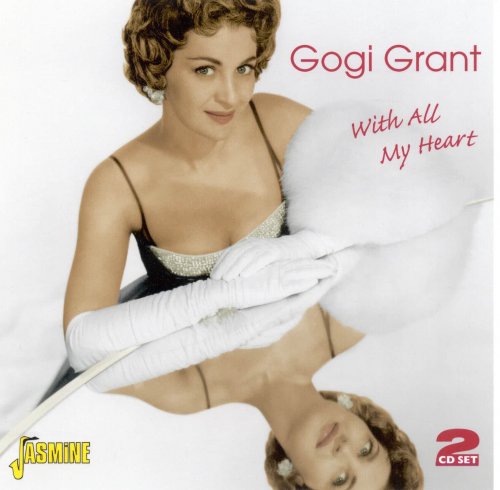
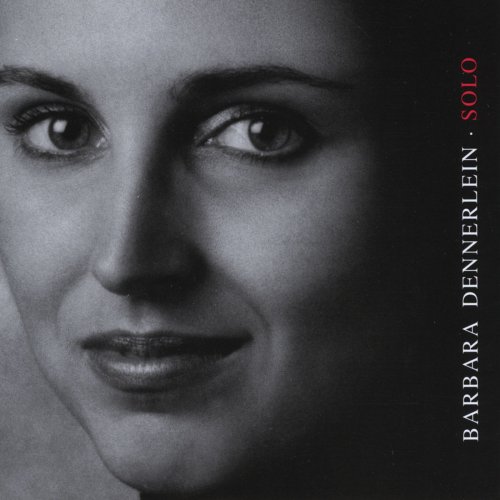
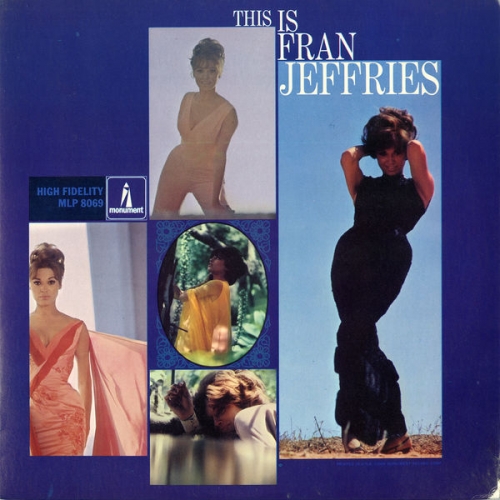
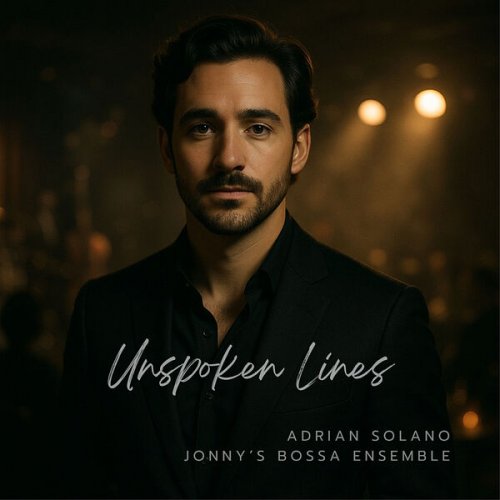
![Lionel Hampton - Jam Session in Paris (Remastered) (2022) [Hi-Res] Lionel Hampton - Jam Session in Paris (Remastered) (2022) [Hi-Res]](https://www.dibpic.com/uploads/posts/2025-12/1766737729_lhjp500.jpg)
